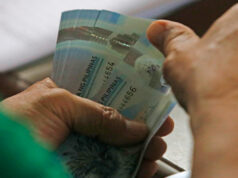European firms see ASEAN falling behind schedule on integration
EUROPEAN businesses consider the economic integration of the Association of Southeast Asian Nations (ASEAN) to be well behind schedule due to the reluctance of individual members to liberalize their markets.
“Regional economic integration in ASEAN is happening at a crazily slow pace, to be quite honest. And so we’re not seeing big improvement in the trade representation in the region…,” Chris Humphrey, Executive Director of the EU-ASEAN Business Council said in a briefing on Tuesday in Makati City.
“Improving customs procedures across Southeast Asia, removing non-tariff barriers in trade are simply not happening,” he added.
Asked if ASEAN members are protective of their economies, he said yes, citing some countries’ continued use of a negative list for foreign investment.
According to its August 2018 EU-ASEAN Business Sentiment Survey which polled 330 executives from European companies around Southeast Asia, only 12% believe that ASEAN has achieved its goal of serving as an integrated market and production hub.
Meanwhile, 54% said the pace of ASEAN economic integration is too slow. Also, the survey noted that nearly 67% believe that there are “too many barriers to the efficient use of regional supply chains,” a significant rise over 2017.
The failure to integrate is taking its toll on small and medium enterprises (SMEs) in ASEAN who cannot optimize trade opportunities with neighbors.
“First of all you’re being overly exposed to the overall economy. You’ve got only 23% of all ASEAN trade to yourself. Whereas in Europe, it’s 63%. You’re not taking full advantage of your own regional supply chains which means you’re not really helping your SMEs develop. SMEs struggle to export generally but it should be easier to trade with your neighbors. But it doesn’t happen at the moment. So there’s a whole range of things as to why regional economic integration makes sense,” Mr. Humphrey added.
He added that ASEAN is lagging in hitting its objectives of lowering trade transaction costs by 2020 and doubling inter-ASEAN trade by 2025.
“There hasn’t been progress on either so far and it wasn’t a lack of foresight in the Philippines. They came up with the premises. Everyone agreed with them but there’s been no movement on these issues. So the first one, the 10% (decline in) cost of trade will be missed… It looks like it will be happening in 2021 and that in particular doesn’t help SMEs,” he added.
Nevertheless, respondents still believe in the economic potential of ASEAN with the economic fundamentals still in place.
In the survey, more than half perceive ASEAN as the region “with greatest economic potential.” Mr. Humphrey noted that this level of confidence has been on an upward trend for the past few years.
As such, Mr. Humphrey advised ASEAN to accelerate the process of resolving trade issues to help opportunities from prospective investors materialize.
Among the sectors he cited where EU can contribute the most, and where liberalization would have the most impact, are financial services, general manufacturing, pharmaceuticals, and automotive.
In 2017, ASEAN FDI inflows totaled $110.4 billion, with the EU accounting for the biggest share at $25.4 billion.
Mr. Humphrey also said the Philippines is among the few countries in the region pushing members to address these issues.
Mr. Humphrey said Trade Secretary Ramon M. Lopez must call on his ASEAN counterparts to reduce non-tariff barriers at the 25th ASEAN Economic Ministers’ Meeting Retreat to be held in Phuket in April.
“The Philippine government, I would say along with its other ASEAN member states, needs to be arguing quite forcibly between ministerial meetings (to make) faster progress,” he said. — Janina C. Lim



